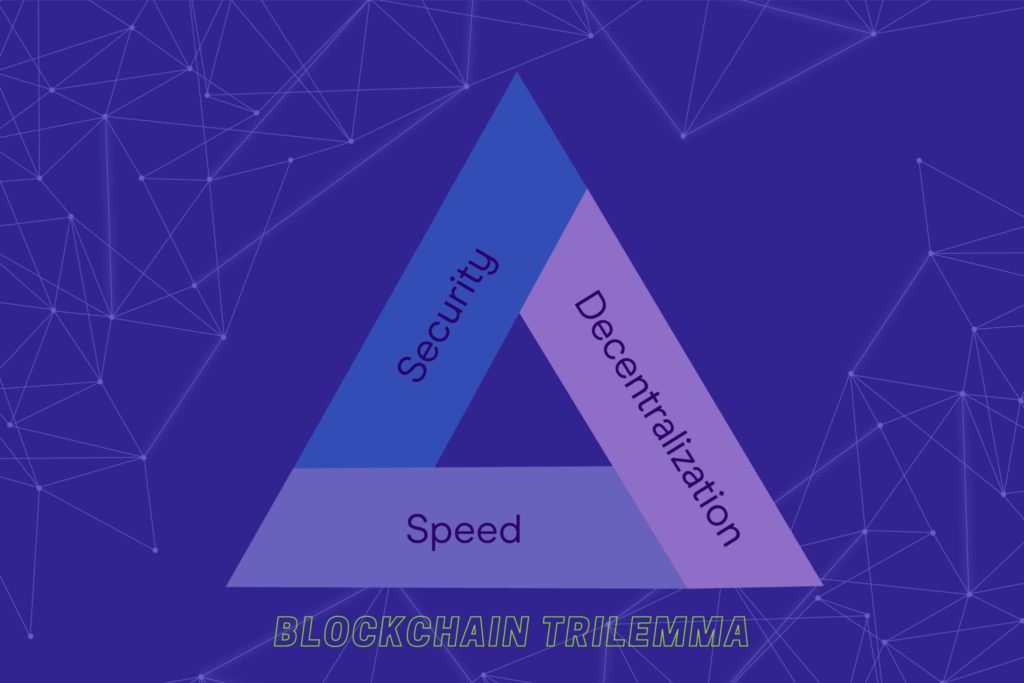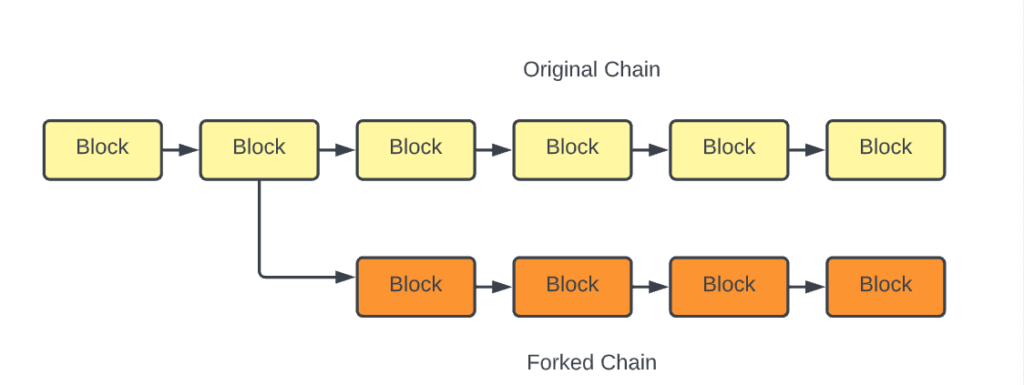Blockchain technology, as a stimulus for software development, has gained interest in a variety of businesses worldwide. The following are some prominent features of blockchain technology: autonomy, data auditing, asset tokenization, immutability, transparency, and, most importantly, decentralization. Although blockchain technology benefits the technical world in several ways, it currently lacks scalability, resulting in delays when businesses or start-ups consider using blockchain technology.
Blockchain is a decentralized ledger technology that focuses on decentralized transaction management. With decentralized transaction management, each node can begin a transaction autonomously, in accordance with the terms specified by a smart contract, without the intervention of a third party. Thus, as the number of users using Blockchain technology increases, scalability difficulties become more prevalent, resulting in increased transaction delay. Numerous blockchain scaling methods exist to overcome these concerns. This post will discuss blockchain scalability and the essential strategies for eradicating blockchain latency.
What does the term “blockchain scalability” mean?
Scalability is a term that relates to a computer system’s capacity for managing a growing volume of work (e.g., a database or search engine). With a large volume of data, a blockchain network does not scale properly or has limited scalability. Blockchain does not make significant attempts to adapt the system to the growing workload, data, and resources.
However, in the context of Blockchain, the term “scalability” has a far broader range of connotations. Surprisingly, the term “blockchain” has not received a full scholarly definition. For instance, one of the most significant articles on blockchain scalability refers to any improvement to Bitcoin in terms of throughput, latency, bootstrap time, or cost per transaction as “scaling,” and the resulting blockchain system as scalable.
While their throughputs differ significantly, some blockchain systems may be considered “scalable.” It is critical to understand that the term “scalable” in the Blockchain context refers to a comparative notion. When a blockchain system is stated to be scalable, it reaches a higher transactions per second than existing systems by modifying its consensus process and certain system properties.
Why is scalability critical in blockchain technology?
Scalability is an important characteristic in blockchain networks since it relates to a network’s capability to handle increased transaction throughput. As a result, scalability is important for the future expansion of Blockchain. The growing number of use cases and widespread use of blockchain technology cannot jeopardise the performance of an entirely scalable blockchain. Blockchains that exhibit lower performance as a result of greater usage may lack scalability.
Additionally, the blockchain trilemma argues that achieving enhanced scalability would imply sacrificing security and decentralization. Simultaneously, it is vital to remember that only scalability enables blockchain networks to compete successfully against centralized, conventional platforms. Is it thus possible to develop Blockchain scaling solutions without jeopardizing security or decentralization?

What are the various scalability solutions for blockchains?
Scalability solutions for the first layer
The most typical response to the question “how do you solve a scalability problem with blockchain?” is to use layer-1 solutions. The first layer, or layer 1 solutions, need modifications to the software running on the main blockchain network. As a result, solutions at the layer 1 level are sometimes referred to as on-chain scaling solutions. Layer 1 solutions improve the fundamental properties and qualities of the blockchain network, such as increasing the block size limit or cutting the block verification time. Three popular layer 1 blockchain scaling techniques are sharding, segregated witness (SEGWIT), and hard forking.
1. Sharding
Sharding is a well-known approach for increasing on-chain scalability. Its primary objective is to partition the blockchain network into smaller, more manageable portions known as shards. The network would then execute the shards concurrently. With each shard processing a fraction of the group’s transaction processing, the network’s processing output would rise. By segmenting the network into smaller components, it can function as a sum of its parts. Sharding significantly reduces the necessity for individual nodes to perform well in order to achieve faster and more efficient transaction throughput.

2. Forks
A hard fork is a method that focuses on structural or fundamental changes to the attributes of a blockchain network. For example, hard forking might suggest increasing the block size or lowering the time required to construct a block. While hard forking is required for layer 1 blockchain scaling solutions, the most productive option is a contentious hard fork. The contentious hard fork fundamentally implies a split in the wider blockchain network, with a faction of the community disagreeing with the core community on certain issues. In such cases, a subset of a blockchain community may choose to fundamentally alter the underlying source code.

3. Segregated Witness
Segregated Witness, or SEGWIT, is another significant addition to blockchain scalability as a first layer alternative. SEGWIT is a Bitcoin blockchain protocol upgrade that focuses on altering the method and structure of data storage. It contributes to the elimination of signature data associated with each transaction, resulting in greater transaction capacity and storage space. It is critical to note that the digital signature used to verify the sender’s ownership and availability of currency consumes around 70% of the overall transaction space. The elimination of the digital signature may create greater capacity for future transactions.
Scalability solutions for the second layer
The feasibility of first-layer or on-chain scaling is highly reliant on the state of the primary blockchain network. However, research on how to overcome a blockchain network’s scalability difficulty has led in the rise of off-chain scaling alternatives.
Scalability solutions in the second layer, or layer 2, are off-chain scaling possibilities. Layer 2 solutions are extra protocols that are constructed on top of the core Blockchain, and they are used to ‘offload’ transactions off the underlying Blockchain. As a result, layer 2 solutions have the potential to make a substantial contribution to resolving space and network congestion issues. Second-layer solutions such as state channels and off-side chains are frequently used.
1. State channels
State channels are a common layer 2 option for scalability in blockchains. Through a variety of ways, state channels enable two-way communication between off-chain transaction channels and blockchain networks. As a result, it has the ability to greatly increase the speed and capacity of transactions. It is critical to remember that state channels do not require instant mining involvement to validate transactions. State channels, on the other hand, operate as resources close to the network that are integrated via a smart contract or multi-signature approach. When a transaction or set of transactions on a state channel is finished, the corresponding Blockchain records the ‘channel’s’ final ‘state’ and any associated transactions.
2. Sidechains
Sidechains are also a common choice among layer 2 solutions for selecting how to scale a Blockchain of your choice. In large batch transactions, the sidechain acts as a transactional chain alongside the Blockchain. Contrary to the core chain, sidechains employ unique consensus procedures.
3. Plasma
Plasma is also a famous blockchain scalability solution at the layer 2 level. It is primarily concerned with the usage of child chains that originate from the parent blockchain, with each child chain acting as a standalone blockchain. As a result, Plasma may be used to handle certain types of transactions while ensuring that they are executed in a similar environment with better security.
4. Lightning Network
Another well-known example of an off-chain method to blockchain scalability is the Lightning Network. It makes use of smart contract functionality over the main blockchain network via private, off-chain channels. Off-chain channels may enable faster and more cost-effective transactions. Most notably, by offloading transactions from the mainchain, Lightning Network alleviates the mainchain’s load. As a result, users no longer have to pay mining fees or wait for block confirmation for extended periods of time.
Scalable consensus procedures like Delegated Proof-of-Stake (DPOS), Proof-of-Authority, Byzantine Fault Tolerance, Distributed ledgers also helps in scaling blockchains.

